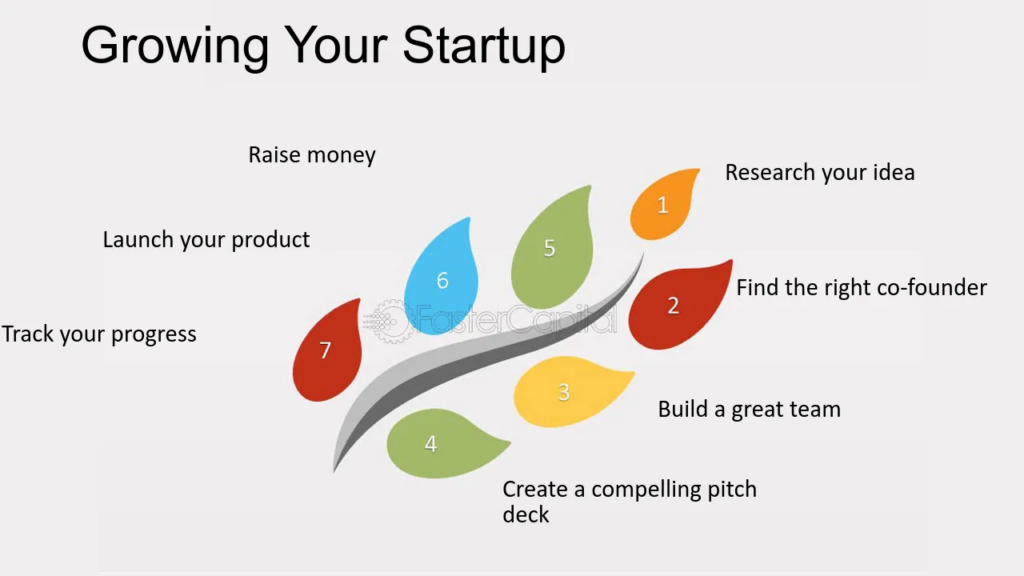Point of this article..
- Achieve Product Market Fit: Before scaling, ensure your product meets the needs of your target market to create a solid foundation for growth.
- Build a Scalable Business Model: Focus on creating a model that allows for growth without drastically increasing costs by using technology, automation, and efficient processes.
- Secure Funding and Expand Marketing: Sufficient capital is needed to hire more staff, boost marketing efforts, and enter new markets to drive sustainable growth.
Ready to turn your startup into a success story? Discover the essential steps to scale your business, boost your revenue, and overcome the hurdles of growth in today’s competitive landscape.
Starting a business is tough, but growing it can be even tougher. Scaling a startup means expanding your business in a way that boosts revenue without adding unnecessary complexity. In this guide, we’ll show you how to grow your startup step by step and highlight the benefits and challenges along the way.
Key Steps to Grow Your Startup

1. Ensure Product-Market Fit
Before scaling, make sure your product or service meets the needs of your target audience. This is known as product-market fit. It’s the foundation for successful growth. Without it, scaling too fast can lead to failure.
Example: ProPS, a startup offering monetization solutions for publishers, achieved product market fit by focusing on digital publishers in Southeast Asia. They understood the needs of this market and created a service tailored to help publishers increase their ad revenue.
2. Create a Scalable Business Model
A scalable business model allows you to grow your customer base without drastically increasing costs. Think of subscription services, digital products, or automating parts of your business. This lets you serve more people without needing a lot more resources.
Example: ProPS automates its ad monetization services for publishers, allowing it to serve more clients efficiently across Southeast Asia.
3. Build a Strong Team
As your business grows, you need a team that can handle more responsibilities. Hire people who share your vision and bring skills that complement the business. A strong, aligned team is key to scaling successfully.
4. Leverage Technology
Use technology to streamline operations. Tools like CRM systems, project management software, and automation platforms can help you manage growth more efficiently.
5. Secure Funding
Scaling usually requires investment. Whether through venture capital, angel investors, or loans, ensure you have enough funding to cover hiring, marketing, and expansion efforts.
6. Expand Marketing Efforts
As you grow, you’ll need more customers. Expand your marketing through SEO, social media, paid ads, and email campaigns. Focus on reaching a wider audience while maintaining high conversion rates.
7. Explore New Markets
Once you have a strong foundation, consider expanding into new regions or offering new products. Research your new market thoroughly to ensure your product will succeed.
Example: ProPS expanded from Indonesia to Southeast Asia by catering to the unique needs of digital publishers in these regions.
Advantages and Disadvantages of Growing a Startup
Advantages:
- Increased Revenue: Scaling opens up opportunities for bigger profits.
- Market Influence: As your startup grows, you gain influence and credibility in your industry.
- Job Creation: Growth allows you to hire more people and expand your team.
- Better Partnerships: Larger companies and strategic partners are more likely to collaborate with established startups.
Disadvantages:
- Operational Complexity: Scaling can make your business more complicated to manage, requiring better processes and systems.
- Financial Risk: Growth often requires heavy investment, which can be risky if returns aren’t immediate.
- Culture Shift: As your team grows, it can be harder to maintain the original company culture and vision.
- Customer Satisfaction: Rapid growth can strain customer service if not managed properly, leading to unhappy clients.
Conclusion
Growing your startup requires careful planning, a scalable business model, and the right team. By focusing on product market fit, using technology to streamline operations, and securing funding, you can scale successfully. Just be mindful of the challenges and be prepared to navigate them as your business grows.
FAQ
1. What is the first step to growing a startup?
The first step is ensuring you have achieved product market fit. This means your product or service effectively meets the needs of your target audience, providing a solid foundation for scaling.
2. How do I know if my business is ready to scale?
Your startup is ready to scale if you have steady revenue, a scalable business model, efficient processes, and the ability to handle increased demand without sacrificing quality.
3. What are the biggest challenges in scaling a startup?
Common challenges include securing enough funding, managing operational complexity, maintaining company culture as the team grows, and ensuring customer satisfaction as you expand.
4. How important is securing funding for scaling?
Funding is crucial for growth, as it allows you to invest in areas like hiring, marketing, technology, and expansion into new markets. Without sufficient capital, scaling may stall or fail.
5. How can I ensure my startup culture stays strong as we grow?
To maintain your company culture, it’s essential to hire people who align with your core values, communicate your vision clearly, and implement strong leadership that promotes the culture at every level.
